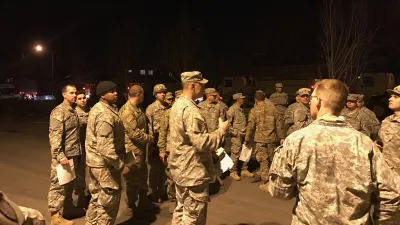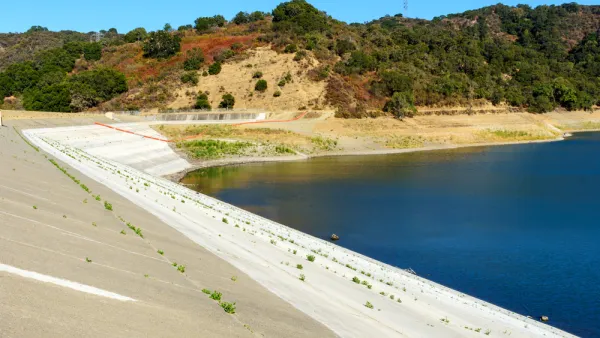Had federal authorities acted on the motion filed by three environmental groups in October 2005, nearly 200,000 people in three counties would not have been forced to evacuate due to a poorly constructed emergency spillway for Oroville Dam.

A hasty, chaotic evacuation of 188,000 people occurred in Northern California on Sunday, Feb. 12 after officials warned of serious erosion in a hillside due to the use of an auxiliary or emergency spillway of the over-capacity Oroville Dam in Butte County. The decision to use the emergency spillway was made after engineers discovered that "a 200-foot-long, 30-foot deep hole" developed in the main, concrete-lined spillway.
"The water began eating away at the ground beneath the top of the auxiliary spillway, carving deep gullies into the earth," reports Brad Plumer for Vox.. "On Sunday afternoon, the [state] Department of Water Resources warned that the lip of the auxiliary spillway, which was never built to be as sturdy as the main spillway, was in danger of 'failure' if the ground beneath gave way."
However, the potential collapse of the hillside [see video from drone] that prompted the sudden evacuation orders should not have come as a surprise. Three groups had foreseen it, but they were rebuffed by a federal commission after DWR complained about the cost to address the problem.
Just to clarify, it was not the dam that was under threat of collapse, but flooding due to collapse of the auxiliary spillway.
Paul Rogers, science reporter for The Mercury News, provides the details on the motion filed [PDF] in 2005 and why no action was taken.
Three environmental groups — the Friends of the River, the Sierra Club and the South Yuba [River] Citizens League — filed a motion with the federal government on Oct. 17, 2005, as part of Oroville Dam’s relicensing process, urging federal officials to require that the dam’s emergency spillway be armored with concrete, rather than remain as an earthen hillside.
The groups filed the motion with FERC, the Federal Energy Regulatory Commission. They said that the dam, built and owned by the state of California, and finished in 1968, did not meet modern safety standards because in the event of extreme rain and flooding, fast-rising water would overwhelm the main concrete spillway, then flow down the emergency spillway, and that could cause heavy erosion that would create flooding for communities downstream, but also could cause a failure, known as “loss of crest control.”
FERC rejected that request, however, after the state Department of Water Resources, and the water agencies that would likely have had to pay the bill for the upgrades, said they were unnecessary.
On Tuesday (Feb. 14) afternoon, the evacuation order had been lifted, changed to an "evacuation warning", report Veronica Rocha and Paige St. John for the Los Angeles Times.
"We have concluded it is safe to reduce the emergency evacuation order to an evacuation warning," said Butte County Sheriff Kory Honea, who had made the initial call Sunday to evacuate a large swath of three counties below the imperiled dam.
At the time, residents were told the spillway to the dam could collapse within an hour.
Hat tip to Mike Painter.
FULL STORY: Oroville Dam: Feds and state officials ignored warnings 12 years ago

Analysis: Cybertruck Fatality Rate Far Exceeds That of Ford Pinto
The Tesla Cybertruck was recalled seven times last year.

National Parks Layoffs Will Cause Communities to Lose Billions
Thousands of essential park workers were laid off this week, just before the busy spring break season.

Retro-silient?: America’s First “Eco-burb,” The Woodlands Turns 50
A master-planned community north of Houston offers lessons on green infrastructure and resilient design, but falls short of its founder’s lofty affordability and walkability goals.

Test News Post 1
This is a summary

Analysis: Cybertruck Fatality Rate Far Exceeds That of Ford Pinto
The Tesla Cybertruck was recalled seven times last year.

Test News Headline 46
Test for the image on the front page.
Urban Design for Planners 1: Software Tools
This six-course series explores essential urban design concepts using open source software and equips planners with the tools they need to participate fully in the urban design process.
Planning for Universal Design
Learn the tools for implementing Universal Design in planning regulations.
EMC Planning Group, Inc.
Planetizen
Planetizen
Mpact (formerly Rail~Volution)
Great Falls Development Authority, Inc.
HUDs Office of Policy Development and Research
NYU Wagner Graduate School of Public Service




























